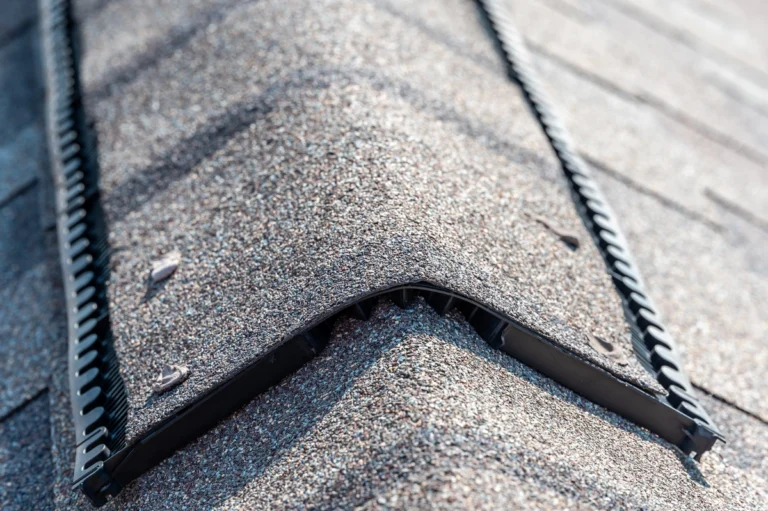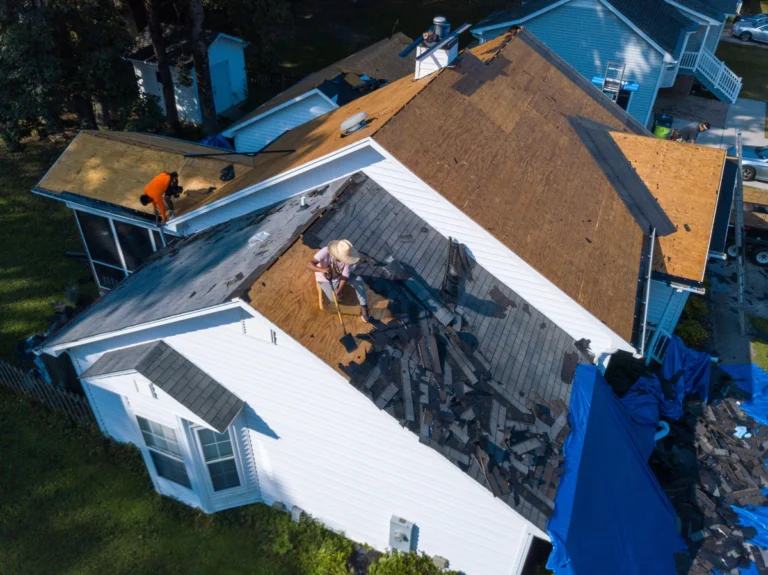Roof underlayment is an integral part of any roofing system. It is a layer put straight on the roof deck beneath the roofing material. It mainly provides a layer of protection for the roof from being damaged by moisture and other elements. This article will help you understand what roofing underlayment is, its importance, the types of roof underlayment, and how to properly install it.
What Is Roof Underlayment?

Roofing underlayment is also known as roofing felt or tar paper. It is a secondary layer installed beneath the roofing layer. It is built from asphalt saturated felt or other synthetic materials and protects the sheathing or roof covering from wind, rain, snow, and ice.
Its primary purpose is to offer a secondary barrier between the primary roofing layer and the building itself, preventing water damage in case of leaks. It further provides insulation and regulates temperature. Presently, most roof underlayments are fire-resistant, hence providing safety in the case of a fire.
Different roofing underlayments differ in weight, thickness, and material. You will have many options when choosing the perfect underlayment for your roof.
Why Is Roof Underlayment Important?
There are several reasons why roofing underlayment is vital for your roof deck, including:
- Roofing underlayment provides a secondary protective membrane. It offers water resistance, protecting the roof deck from damage if the primary roof sheathing fails to protect it. Roofing underlayment, especially asphalt saturated felt, provides a water-resistant barrier to the roof system.
- It helps to prevent leaks. As roofing underlayments are water resistant, they help prevent water from pouring through the roof to the building, which can lead to leaking. Water leakage can seriously damage the structure, like rotting, mold growth, and overall structural damage. This is ideal in extreme weather conditions like heavy rain and snow. The primary roofing layer of protection alone can’t prevent water from seeping through, even when roofing shingles are damaged.
- It protects the entire roof. Without the roofing underlayment, the roof deck is prone to damage from moisture, UV rays, wind-blowing debris, and other environmental elements, which can weaken the roof’s structure. Hence the underlayment offers long-lasting protection that is a necessary part of the entire roof deck.
- It provides an insulation and soundproofing layer. Some types of roofing underlayment can help with absorption and loss of heat. Insulation benefits of the roofing underlayment ensure that the building is energy efficient all year round. It further provides soundproofing benefits by absorbing sound and minimizing exterior sounds.
- Roofing underlayments are a requirement by building codes. This requirement ensures that all buildings are safe from water damage. Especially in areas in extreme weather conditions, this is a requirement enforced by law.
- It can eventually extend the roof system’s lifespan by providing an extra moisture barrier to help the roof last much longer, decreasing the money you would use on repairs or replacements. Without a proper underlayment, roofs will only last half of their lifespan.
- Roof underlayments provide water resistance. It can withstand wind and prevent shingles from toppling during high winds or storms. This reduces damage done to the roof or the property.
- It offers fire protection. Modern underlayments are fire resistant, which helps a fire not to spread to the whole building in case of a fire. It contains the fire, allowing leeway for the people inside the building to run.
- Underlayment provides an overall aesthetic appeal. It makes a roof look more pleasing to the eye by appearing smoother and more.
Types of Roofing Underlayment

There are different roofing underlayment types, including:
- Asphalt-saturated felt underlayment: This traditional roofing underlayment has been popular for decades. It is built from an organic or fiberglass reinforcement with an asphalt saturated felt and coated with a waterproof seal. It’s preferred for its affordability, being able to install, and protection layer.
- Synthetic underlayment: Synthetic underlayment is created from polymers and other synthetic roofing materials. Its durability makes it more resistant to tearing, moisture, and UV rays. Additionally, it’s light hence easy to install.
- Rubberized asphalt underlayment: This roofing underlayment is built from asphalt and modified with rubber. Even though it’s more expensive than asphalt-saturated felt underlayment, it provides more water resistance.
- Radiant barrier underlayment: This type wards away heat away from the roof using its reflective surface. It’s ideal for extreme temperatures and can reduce energy costs.
- Self-adhering underlayment: This one has a self-adhesive backing that sticks easily to the roof. This makes installing it easy and provides a watertight seal to prevent infiltration.
The underlayment types differ depending on the type of roofing material, weather conditions, and budget.
How To Install Roof Underlayment to the Roof Deck
The installation of roofing underlayment differs in terms of the type used. At first, you need to gather specific materials to start the process, which includes the following;
- Roofing underlayment
- Roofing nails
- Hammer or nail gun
- Chalk line
Once you have gathered all the materials, you start the installation process, which involves the following steps:
- Start the process on a clean roof deck. Remove any debris on the roof.
- Start at the bottom edge of the roof, unroll the underlayment, and align it with the eaves. Remember to leave a ¼ to ¾ -inch overhang over the edge.
- Nail the underlayment using the roofing nails. Place the pins 6 inches apart along the edges and 12 inches apart at other parts of the roof surface.
- Continue unrolling the underlayment across the entire roof surface.
- Cut the underlayment to accommodate vents and chimneys using a knife.
- Lastly, trim any unnecessary overhangs using a knife.
Ensure you follow any instructions the manufacturer provides for the specific underlayment, as the installation process may vary from one type to another.
Conclusion
To summarize, roof underlayment is integral to a roofing system, protecting the roof from severe damage. However, it will not be good protection against damage if it’s not of good quality, so as a homeowner, you need to ensure that you have a good quality one for your roof.
You should consider contacting Sundace Custom LLC if you’re looking for an experienced roofing contractor who can install a good quality underlayment for you and help you with all your other roofing needs. The team is experienced in home renovations and roofing services like replacement, repair, and underlayment installation. Book a consultation with them and protect your roof from damage immediately.





